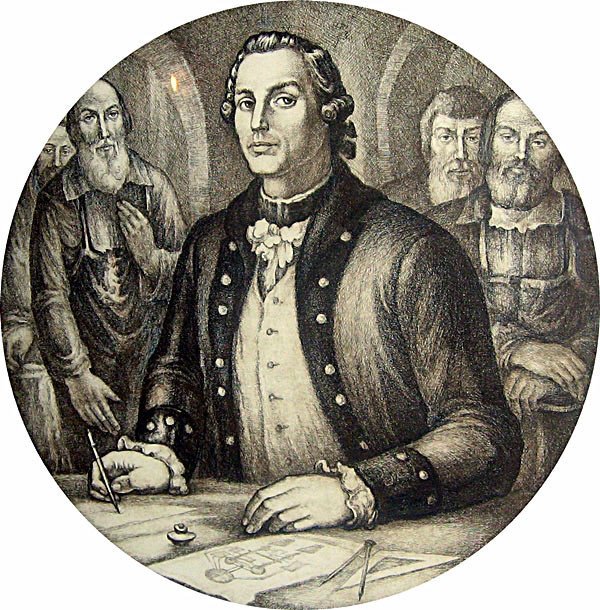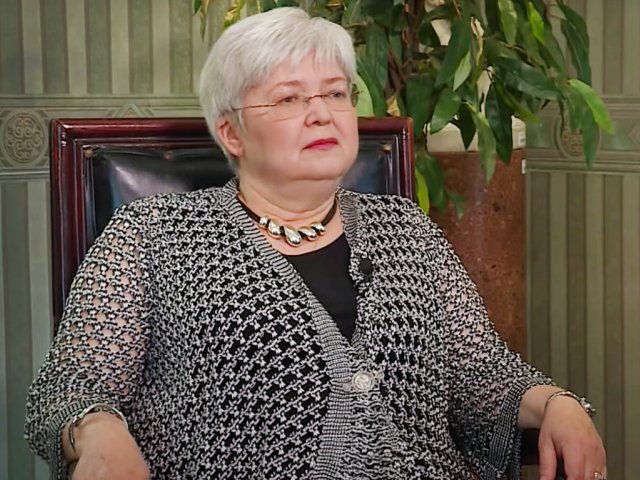Official:
Ivan Ivanovich Polzunov. March 14, 1728 – May 27, 1766. Russian inventor, creator of Russia's first steam engine and the world's first two-cylinder steam engine.
Life and work:
1. The era of steam engines began in approximately at the same time in all parts of Europe: in the early 18th century. The introduction of then called “fire” machines is traditionally considered the start of the industrial revolution. And the first steam engine in Russia was created by Ivan Ivanovich Polzunov.
2. He was born into a family of a soldier in Yekaterinburg in 1728. His father Ivan Alekseevich Polzunov was, using modern terminology, a soldier of construction corps. He cared about his son's future and sent him to the famous and popular in industrial Ural Mining School at the Yekaterinburg Steel Plant.
3. The nine-year-old was a success at arithmetic and language arts, and in four years, he became mechanic Nikita Bakharev's apprentice. That was when real school began, Polzunov's real training in engineering: mechanics, hydraulic machine calculation, design, metallurgy.
4. Apprentice Polzunov's help was evidently remarkable, because Nikita Bakharev recommended him for wages increase twice.
5. In 1747, a decision was made to develop a state-owned plant in Altai. On his way to Barnaul, chief commander of Kolyvano-Voskresensk plants Andreas Beer visited Yekaterinburg and selected a group of promising and useful specialists for the tsar's plants. eighteen-year-old Ivan Polzunov was also recruited and left his native Ural.
6. At the Barnaul Copper Plant, Polzunov started from the job of a caretaker and tallyman at smelt furnaces, then called hittenschreiber.
7. The talented and smart young man was quickly noticed: not everyone is able to go into the depths of metallurgy like this! He was promoted to junior schichtmeister with wages increase to 36 rubles a year.
8. What Polzunov did not do in Barnaul: he melted ore, repaired and built ships, searched for furnace stone, stored up planks and wood, and burned coal for metallurgic furnaces.
9. Polzunov was even vested with the highest trust to deliver a caravan with gold and silver to the treasury in faraway St. Petersburg. He was also trusted with a large sum of money to buy goods needed for the plant.
10. At the Zmeinogorsk mine, Polzunov created what was probably the very first waterwheel system receiving water through a special channel from a remote dam. All factory machines were powered up by water accumulated in ponds behind dams.
11. But no matter how many power channels one can build following Polzunov's design, water energy cannot provide the development of production. Polzunov suggests that the use of water should be walked away from. And adds, “I must put every effort into understanding how to make fire serve machines.”
12. In 1763, head of Kolyvano-Voznesensk plants Poroshin receives a proposal from Polzunov to build a fire-powered machine for factory needs.
13. Polzunov's “fire-powered machine” was, in fact, the world's first double-cylinder engine.
Two cylinders worked for one axle, and it enabled the engine to act without using any hydraulic energy even in dry places and mountains. It was a huge step forward compared to existing steam machines, which could not work without hydraulic power.
14. The project was sent to Catherine II, and the empress appreciated it: Ivan Polzunov was awarded with 400 rubles and promoted two steps ahead, to captain lieutenant. However, nobody actually looked into the essence of the invention.
15. The factory management kindly agrees to begin work, but does not provide any help, does not allocate the needed workers and assistants, only a small number of inexperienced apprentices.
16. In 1764, Polzunov started to create a steam engine of then unprecedented capacity – 32 horsepower. A setup for gearing air pumps for steel furnaces allowed for the first time to avoid using waterwheel completely. Not in pictures, but in real factory production.
17. The size of Polzunov's steam machine can be characterized by the fact that some of its parts weighed up to 170 poods. The gargantuan machine required the invention and construction of special tools.
18. A year and a half after the beginning of work, the steam machine was ready and tested, however, the test was not complete, because the blowing machine that it was supposed to serve was not ready yet, so there was nothing to give power to.
19. Strenuous work from morning till night in unheated premises damaged the health the scientist and inventor. He died a week before the official launch of the machine. On the 27th of May, Gregorian calendar, 1766, Polzunov died of consumption. He was 38 years old.
20. His machine did not live long either. It worked for a month and a half, brought enormous profit, and then broke down. It was not fixed – there was enough free workforce. Polzunov was just ahead of his time.
21. His name was given to Altai State Technical University. A monument to the inventor can be found in front of its main building. Another monument to Polzunov graces Veliky Novgorod.






















